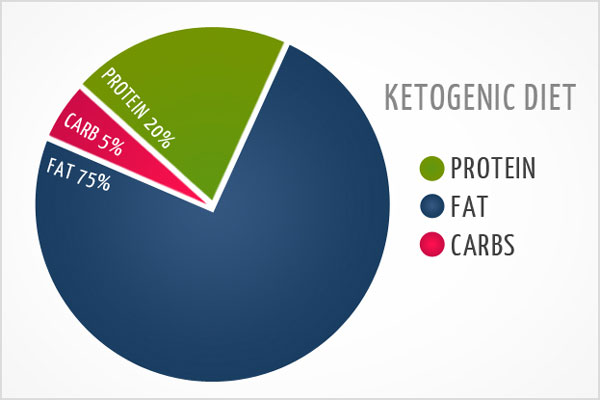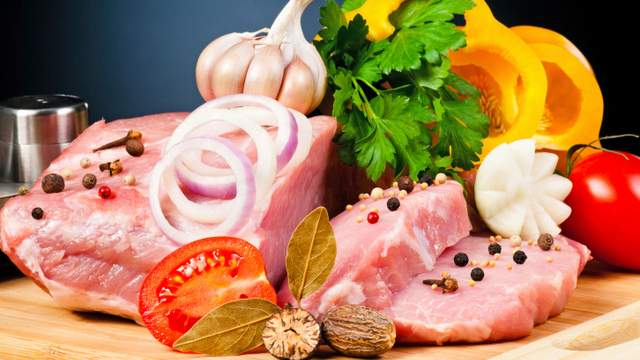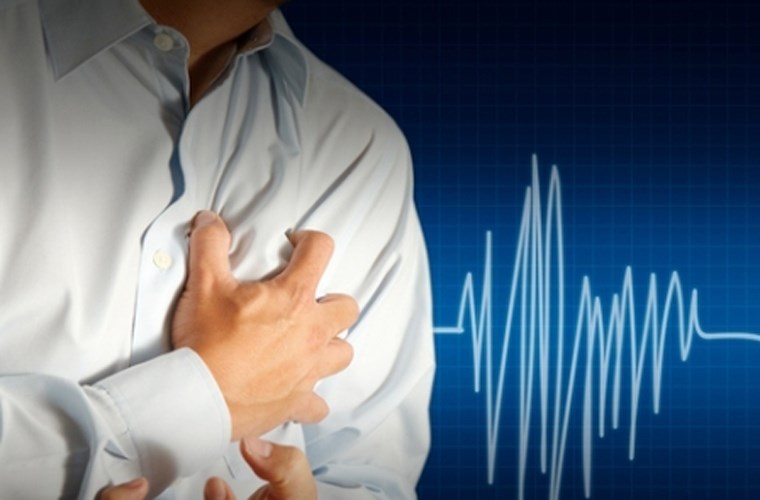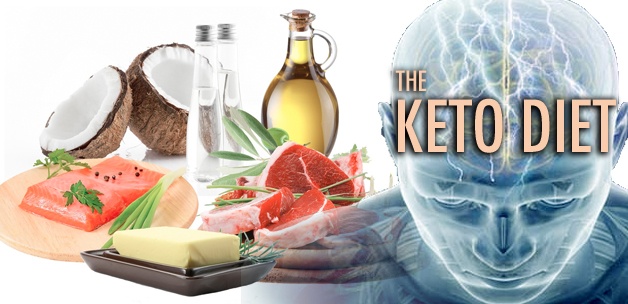The great benefits of Ketogenic - 2016's most sought-after diet
Ketogenic is referred to as Keto, a diet that has been around since the 1920s but has so far been popular. Even last year, this diet applies to Arnold Classic, Las Vegas, Ohio and Olympia Fitness & Performance Expo.
So what are the benefits of Ketogenic, how does it work?
What is ketogenic?
Ketogenic is a diet to lose weight with many similarities to low-carb diets. Consuming a very small amount of carbohydrates (carb), a large amount of fat and protein causes the body to switch to a metabolic state that burns fat instead of glucose called ketosis.
With this diet, you have to reduce the amount of carbohydrate to a minimum of about 30-50 grams a day to allow your body to burn off all of your stored glucose. After that, to be physically active, you must burn fat to create energy, thereby helping you lose weight successfully, avoiding other health risks caused by obesity.

One of our daily meals is usually 20% fat, 30% protein and 50% carbohydrate. With this diet and sedentary habits, our bodies have excess energy. Carbohydrates after digestion turn into blood glucose molecules. Unused glucose is converted into fat stored as excess fat.
In short, it is the carbohydrates and glucose that are the main cause of weight gain, not 30% of the fat in the daily diet.
With Ketogenic, we only eat 5% carbohydrates, 25% protein, 70% fat so that carbohydrates have no chance of turning into fat.
With less than 10 times the usual amount of carb, the amount of glucose that is loaded into the body is not enough for the body to use even if you have less activity. Not enough glucose, forcing the body to convert stored fat as an energy source. This process takes place as follows: When the liver receives a large amount of fatty acids that are broken down from body fat tissue, it converts these fatty acids into an important molecule called Acetyl-CoA.
Acetyl-CoA is also produced from carbohydrate glycolysis. After that, Acetyl-CoA continued to be broken down into two molecules, acetoacetata and beta-hydraxybutyrate called ketone bodies.
Ketone bodies are introduced into the bloodstream and transported to each cell and converted back into Acetyl-CoA and then transferred to the Krbes cycle to create a currency of ATP energy in the mitochondria of the cells.
The process of burning fat instead of glucose to create this energy is called the Ketosis state. And this is also the origin of the name given to the Ketogenic diet.
Types of Ketogenic diets
There are many different Keto diets. But what is important and crucial to the success of this diet is to keep carbohydrate intake below 5% of daily calories.

- Ketogenic diet standard : The exact ratio is 5% Carb, 20% protein and 75% fat. This is a diet very low in carbohydrates, medium protein and high in fat.
- Ketogenic diet by cycle : 5 days of eating according to the standard Ketogenic regime and 2 "compensatory" days with high carbohydrate levels.
- Ketogenic diet by purpose : This mode will allow you to increase the amount of carbohydrate when exercising at high intensity.
- Ketogenic protein rich diet : Percentage of 60% fat - 35% protein and 5% carbohydrate.
These foods can be eaten and avoided eating in Ketogenic mode
(Applies to standard Ketogenic mode although some content may be applicable to all types of diets).
Foods that should be avoided
List of foods that should be completely restricted or removed from the Ketogenic mode:
- High sugar foods: Fruit juices, dried fruits, soda, cakes, ice cream, candy, yogurt, chips .
- Cereals or food: Wheat, rice, cereal products .
- Vegetables: Potatoes, sweet potatoes, carrots, beets.
- Fruits: All fruits, except a handful of mulberry fruits, like strawberries.
- Legumes: Peas, kidney beans, green beans, lentils.
- Sugar-free foods: They often contain a lot of low energy sugars and can affect the amount of ketone in the body. These are also very carefully processed foods.
- Some spices, sauces containing sugar and fat are not good for health.
- Low-fat products or dietary products: these products often contain a lot of carbohydrates and are often processed products.
- Alcoholic beverages: Due to the amount of carbohydrates found in these drinks, they can greatly damage the body's ketosis process.
In short: Any food rich in carbohydrates should be restricted.
Foods that should be eaten when performing Ketogenic mode
You should build menus based on the following foods:
- Meat: Red meat, sausage, bacon, chicken, pork.
- Fatty fish: For example, salmon, tuna, mackerel.
- Egg.
- Butter and cream.
- Cheese: Look for unprocessed cheeses like cheddar, goat, cream, blue or mozzarella.
- Nuts such as almonds, walnuts, flax seeds, pumpkin seeds, split seeds .
- Healthy oils: Pure olive oil, coconut oil and avocado oil.
- Avocado.
- Low-carbohydrate vegetables: Most vegetables have green leaves, tomatoes, onions, peppers .
- Spices: You can use salt, pepper and other spices and herbs.

Menu a day to eat Ketogenic samples
- Breakfast : 2 fried eggs with butter + 2 slices of meat.
- Mid-session : 2 celery + 25 grams of cheese.
- Lunch : 140 grams of chicken breast + 85 grams of cabbage + 2 tablespoons of mixed vegetables rich in fat and low in carb.
- Mid-session : 30 grams of almonds.
- Dinner : 200 grams of sirloin beef + 85 grams of spinach + 14 small mushrooms.
Benefits of the Ketogenic diet
The benefits of this diet are demonstrated by some studies but have not yet reached a final conclusion.
Cardiovascular disease : This regime helps reduce excess body fat, blood pressure, blood sugar and Cholesterol, thereby reducing the likelihood of disease.
Alzheimer's disease : Ketogenic mode can reduce symptoms as well as reduce the course of Alzheimer's disease.
Cancer : Recently, this regimen is used to treat some types of cancer and reduce tumor growth.
Epilepsy : Studies have shown that the ketogenic regime can significantly reduce seizure symptoms in children with epilepsy.
Polycystic ovary syndrome : Ketogenic mode can reduce the amount of insulin in the blood, and this plays an important role in polycystic ovary syndrome.
Brain damage : This mode can reduce confusion and help recover after brain damage. Benefits have been studied in animals.
Parkinson's disease : A study has shown that this diet helps to improve symptoms of Parkinson's disease.
Acne : Eat less sugar and processed foods, reduced insulin levels will reduce acne.
 Ketogenic diet helps reduce the risk of cardiovascular disease.
Ketogenic diet helps reduce the risk of cardiovascular disease.
Who should adopt the Getogenic diet?
Getogenic is in the top of the most searched diets in 2016 on Google, but should anyone apply?
In the above 4 modes, only the Ketogenic diet standard and protein-rich Ketogenic regime are scientifically studied to prove benefits. Particularly Ketogenic diets by cycle and purpose are often applied to athletes and those who want to increase muscle mass.
According to experts, not everyone should implement this diet. It will be good for people who are overweight, obese, have diabetes or want to improve their metabolic function.

Besides the benefits, the Getogenic diet also has its downside. You may experience some side effects such as "keto-flu" when the body has not adapted to this diet. At that time, you will experience symptoms such as fatigue, drowsiness, hunger, nausea, gastrointestinal discomfort, sleep problems and reduced ability to exercise.
Besides, this diet also changes the balance of water and minerals in the body.
To reduce side effects you should:
- Add salt at meals or supplement with mineral supplements
- Try to load 3,000-4,000mg of sodium, 1,000mg of potassium and 300mg of magnesium a day
- At the beginning, you can eat until you feel full and you should not limit calories.
As with any diet, you need to persevere to perform regularly and for a long time, Ketogenic is effective.
You should read it
- 4 'scientifically proven' weight loss tips can make you fat
- New research shows that vegetarian diet is twice as effective when losing weight
- Artificial sweeteners can be counterproductive for dieting
- 7 common errors are common when losing weight
- Simple ways to help you burn calories while sleeping
- The secret to keeping the body slender thanks to the diet of Japanese women
 10 reasons why smartphones negatively affect your health
10 reasons why smartphones negatively affect your health Do you have the correct personal hygiene to ensure health?
Do you have the correct personal hygiene to ensure health? How to recognize the umbrella of sugar and chemical sugars
How to recognize the umbrella of sugar and chemical sugars Explain why our eyelids sometimes twitch?
Explain why our eyelids sometimes twitch? How to prevent dizziness and nausea when reading books on the train
How to prevent dizziness and nausea when reading books on the train 6 bad things will happen if you regularly skip meals
6 bad things will happen if you regularly skip meals